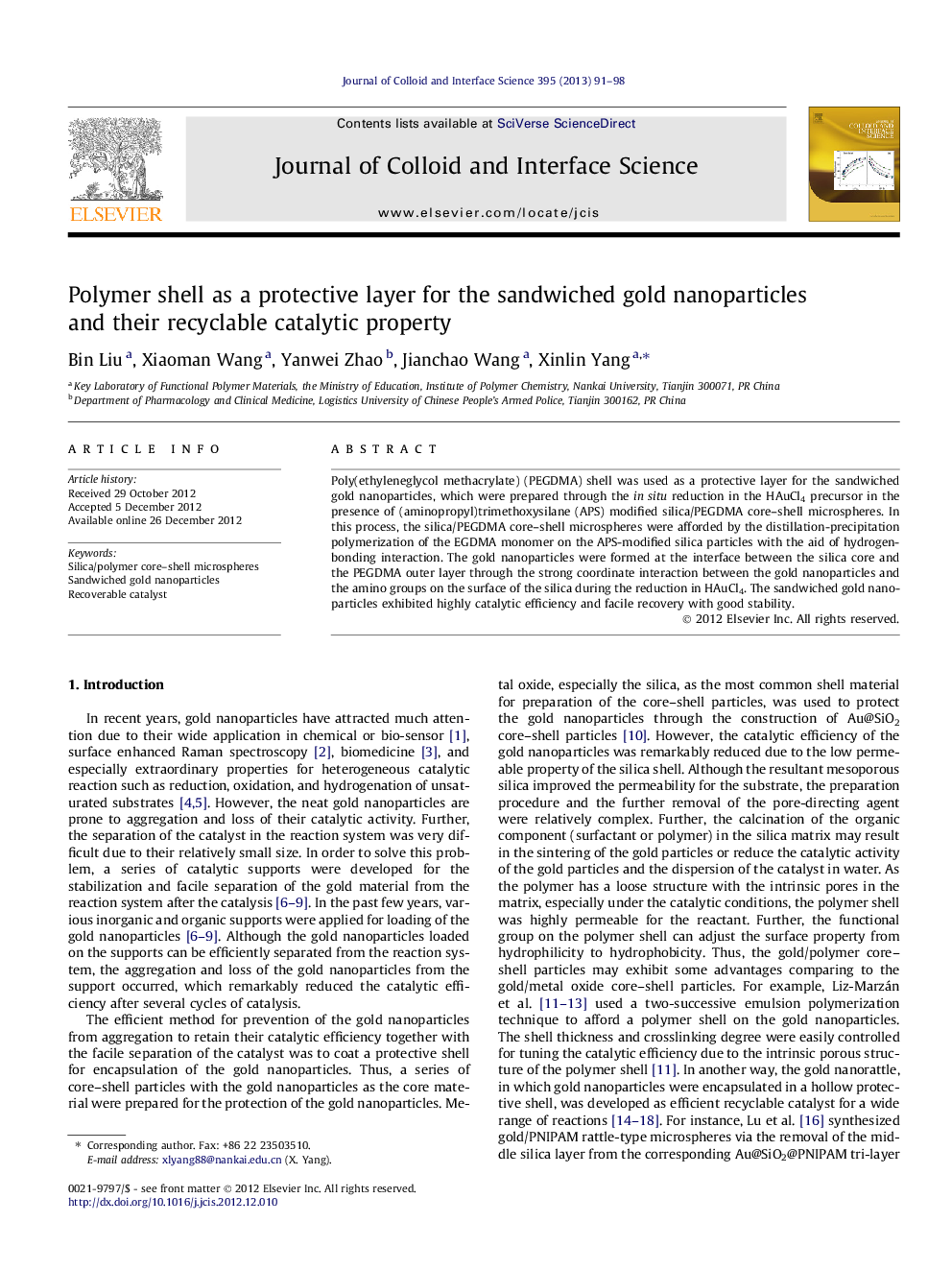| Article ID | Journal | Published Year | Pages | File Type |
|---|---|---|---|---|
| 608050 | Journal of Colloid and Interface Science | 2013 | 8 Pages |
Poly(ethyleneglycol methacrylate) (PEGDMA) shell was used as a protective layer for the sandwiched gold nanoparticles, which were prepared through the in situ reduction in the HAuCl4 precursor in the presence of (aminopropyl)trimethoxysilane (APS) modified silica/PEGDMA core–shell microspheres. In this process, the silica/PEGDMA core–shell microspheres were afforded by the distillation-precipitation polymerization of the EGDMA monomer on the APS-modified silica particles with the aid of hydrogen-bonding interaction. The gold nanoparticles were formed at the interface between the silica core and the PEGDMA outer layer through the strong coordinate interaction between the gold nanoparticles and the amino groups on the surface of the silica during the reduction in HAuCl4. The sandwiched gold nanoparticles exhibited highly catalytic efficiency and facile recovery with good stability.
Graphical abstractFigure optionsDownload full-size imageDownload high-quality image (51 K)Download as PowerPoint slideHighlights► Synthesis of the sandwiched nanoparticles between the silica core and the PEGDMA shell. ► The dual functions of amino groups for the resultant sandwiched gold nanoparticles. ► Stable catalytic activity of the sandwiched gold nanoparticles during the recovery.
